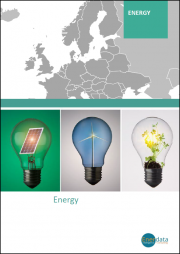
|
시장보고서
상품코드
1344322
ESCO(Energy Service Company) 시장 : 고객 유형별 - 세계 기회 분석 및 산업 예측(2023-2032년)Electric Service Companies (ESCOs) Market By Customer Type (Residential, Commercial, Industrial): Global Opportunity Analysis and Industry Forecast, 2023-2032 |
||||||
ESCO(Energy Service Company) 시장은 2022년 302억 달러로 평가되며, 2023년부터 2032년까지 CAGR 7.2%로 성장하여 2032년에는 598억 달러에 달할 것으로 예상됩니다.

ESCO(Energy Service Company)는 전기 서비스 및 에너지 절약 서비스의 설계, 개발 및 제공에 종사하는 사업체를 말합니다. 이 보고서는 특히 시장의 현재 동향과 미래의 잠재적 성장 기회에 초점을 맞추고 있습니다. 주거용, 상업용, 산업용 등 다양한 고객 부문을 세분화하여 각 카테고리에 대한 종합적인 인사이트를 제공합니다. 또한 북미, 유럽, 아시아태평양, 라틴아메리카, 중동 및 아프리카 등 다양한 지역에서의 ESCO 시장 동향도 살펴봅니다. 또한, 정부 규제와 정책을 분석하여 향후 성장 기회를 제시하고, 이를 통해 ESCO의 소비자 수용성을 높일 수 있는 방안을 제시합니다. 상업 부문은 ESCO 프로젝트에서 중요한 역할을 하는 분야로, 주로 대규모 공공 개발 프로젝트와 인프라 활동에 종사하는 고객이 참여하고 있습니다. 하지만 COVID-19 사태로 인해 상업 부문은 큰 도전에 직면했습니다. 봉쇄 조치로 인해 기업들은 생존과 고정비 대책에 초점을 맞추고 추가 개발 계획의 추진을 포기했습니다. 그 결과 상업 부문의 ESCO 프로젝트가 연기되거나 중단되어 시장을 억제하는 요인으로 작용하고 있습니다.
그러나 경제가 점차 재개되고 회복됨에 따라 상업 부문은 긍정적인 성장세를 보이고 있으며, 이는 ESCO 시장의 원동력이 되고 있습니다. 상업시설은 운영 수요를 효과적으로 충족시키기 위해 더 높은 수준의 전기 지원을 필요로 합니다. 많은 상업용 건물은 현재 사업 전략의 일환으로 조명 및 전기 시스템을 개조하거나 업그레이드하고 있습니다. 이러한 개조 및 업그레이드의 목적은 에너지 비용을 절감하고 탄소 배출량을 줄이는 것이며, 이는 지속가능성 목표에 부합하는 것입니다. 경기 회복, 상업용 건물의 전기 인프라 개선의 필요성, 에너지 절약 이니셔티브의 증가 등 복합적인 요인이 ESCO 시장의 상업 부문 성장에 긍정적인 영향을 미칠 것으로 예상됩니다. 기업들이 효율성과 지속가능성을 추구함에 따라 ESCO는 에너지 관련 목표를 달성하는 데 중요한 역할을 하고 있습니다.
유럽에서는 독일, 이탈리아, 프랑스, 스페인 등 여러 나라에서 온실가스 배출을 줄이고 전반적인 에너지 성능을 개선하여 개인 및 단체의 에너지 소비를 최적화하기 위한 다양한 에너지 서비스 및 솔루션을 제공하는 ESCO의 존재가 확립되어 있습니다. 존재가 확립되어 있습니다. 주택 분야에서는 에너지 효율적인 냉난방 시스템 설치를 통해 주택 단열 서비스를 제공하고 있으며, 이는 유럽에서 중요한 부분입니다. 이탈리아의 ESCO 시장 성장은 에너지 효율을 촉진하는 정부의 노력과 정책에 의해 주도되고 있으며, ESCO는 에너지 서비스를 제공하고, 에너지 효율을 촉진하고, 고객의 에너지 소비와 탄소 배출량을 줄여 저탄소 경제로의 전환에 기여하고 있습니다. ESCO는 국가와 유럽의 에너지 및 기후 목표를 달성하는 데 중요한 역할을 하고 있으며, 태양광 패널, 히트펌프와 같은 재생에너지 솔루션을 제공하여 에너지 낭비를 줄이고, 유틸리티 비용을 절감하고, 보다 쾌적한 주거 환경을 조성하기 위해 주택 소유자를 지원하고 있습니다.
목차
제1장 서론
제2장 주요 요약
제3장 시장 개요
- 시장 정의와 범위
- 주요 조사 결과
- 영향요인
- 주요 투자 기회
- Porter's Five Forces 분석
- 시장 역학
- 성장 촉진요인
- 서비스 인지도와 증명된 우위성
- 시장 성장을 지지하는 정부 정책
- 기술 진보
- 성장 억제요인
- 법적 체계가 없는 점에 의한 낮은 신뢰
- 기회
- 연수 실시와 숙련 노동력 구축
- 성장 촉진요인
- COVID-19 : 시장에 대한 영향 분석
- 규제 가이드라인
- 특허 상황
- 밸류체인 분석
제4장 ESCO(Energy Service Company) 시장 : 고객 유형별
- 개요
- 주택
- 상업
- 산업
제5장 ESCO(Energy Service Company) 시장 : 지역별
- 개요
- 북미
- 미국
- 캐나다
- 멕시코
- 유럽
- 독일
- 영국
- 프랑스
- 이탈리아
- 스페인
- 기타 유럽
- 아시아태평양
- 중국
- 일본
- 인도
- 한국
- 호주
- 기타 아시아태평양
- 라틴아메리카, 중동 및 아프리카
- 브라질
- 사우디아라비아
- 남아프리카공화국
- 기타 라틴아메리카, 중동 및 아프리카
제6장 경쟁 상황
- 서론
- 주요 성공 전략
- 주요 10개사 제품 매핑
- 경쟁 대시보드
- 경쟁 히트맵
- 주요 기업의 포지셔닝, 2022년
제7장 기업 개요
- Alpiq Holding Ltd.
- Eaton Corporation
- Enel X S.r.l.
- General Electric
- Honeywell International Inc.
- Johnson Controls International
- Orsted A/S
- Schneider Electric SE.
- Siemens
- Veolia Environment S.A.
According to a new report published by Allied Market Research, titled, "Electric Service Companies (ESCOs) Market," The electric service companies (ESCOs) market was valued at $30.2 billion in 2022 and is estimated to reach $59.8 billion by 2032, growing at a CAGR of 7.2% from 2023 to 2032.

Electric service companies (ESCOs) refer to entities that engage in the design, development, and provision of electric services or energy-saving services. The market report specifically centers around the present trends in the market as well as the potential growth opportunities in the future. The report delves into various customer segments, namely residential, commercial, and industrial, providing comprehensive insights into each category. In addition, it examines the current market trends of ESCOs across different regions, including North America, Europe, Asia-Pacific, and LAMEA. Furthermore, the report suggests future growth opportunities by analyzing government regulations and policies, which, in turn, can enhance consumer acceptance of ESCOs. The commercial sector has been a significant player in ESCO projects, mainly involving clients engaged in major public development projects and infrastructure activities. However, during the pandemic, the commercial sector faced significant challenges. Lockdown measures discouraged businesses from pursuing further development plans as they focused on survival and meet fixed costs. Consequently, ESCO projects in the commercial sector were delayed or canceled, acting as a restraining factor for the market.
However, as economies gradually reopen and recover, the commercial segment is showing positive growth, which will act as a driving force for the ESCO market. Commercial buildings require a higher level of electrical support to effectively meet their operational demands. Many commercial properties are currently undergoing lighting and electrical system renovations or upgrades as part of their business strategies. These retrofits or upgrades aim to save energy costs and reduce carbon footprints, aligning with sustainability goals. The combined factors of recovering economies, the need for improved electrical infrastructure in commercial buildings, and an increase in energy-saving initiatives are expected to positively contribute to the growth of the commercial segment in the ESCO market. As businesses strive for efficiency and sustainability, ESCOs play a crucial role in helping them achieve their energy-related objectives.
In Europe, the countries such as Germany, Italy, France, and Spain have a well-established presence of ESCOs offering a range of energy services and solutions for optimizing individual as well as group energy consumption by reducing greenhouse gas emissions and improving overall energy performance accordingly. For the residential sector, they offer home insulation services through the installation of energy-efficient heating and cooling systems, which is an important aspect of Europe. The growth of the ESCO market in Italy is driven by government initiatives and policies promoting energy efficiency. ESCOs contribute to the transition to a low-carbon economy by providing energy services, promoting energy efficiency and helping clients reduce energy consumption and carbon emissions. They are important players in achieving national and European energy and climate targets. They further offer renewable energy solutions such as solar panels and heat pumps and, in turn, help homeowners in reducing energy waste, lowering utility bills, and creating more comfortable living environments.
In addition, they offer products and services to Commercial customers such as businesses, offices, hotels, and other commercial establishments. Implementing energy-efficient measures, optimizing building operations, and achieving sustainability targets are the regular tasks of ESCOs. For industrial customers, ESCOs offer energy optimization, improvements in manufacturing processes, and required equipment upgrades/changes. They further work with industrial facilities and large-scale industries, which are targeted to identify energy-saving opportunities, requirements for any energy management solutions, and integration of renewable energy sources. Europe has a strong focus on energy efficiency and sustainability, and ESCOs play a vital role in supporting these objectives. ESCO projects in Europe often benefit from government policies and incentives that encourage energy efficiency investments and renewable energy adoption. Multiple policies have been implemented that support ESCO business such as financial incentives, tax benefits, and supportive regulatory frameworks. Moreover, they offer services such as providing energy monitoring services, data analysis, and ongoing maintenance services.
To understand the market, drivers, restraints, and opportunities are explained in the report. The major key players operating in the industry include Schneider Electric, General Electric, Siemens, Honeywell, Johnson Controls, Orsted, Eaton Corporation, Alpiq, Enel X, and Veolia. Furthermore, the key strategies adopted by the potential market leaders include expansion, mergers, and acquisition.
The ESCO market experienced a significant impact as a result of medium- and small-scale organizations redirecting their funds toward survival and fixed expenses during the pandemic. Numerous projects that were planned came to a standstill due to the substantial initial investment required to initiate them. Consequently, companies postponed or altogether abandoned these projects. However, the economic recovery has led to reinvestments in the projects coupled with several benefits and subsidies offered by governments across the world aimed at boosting industry growth.
Key Benefits For Stakeholders
- This report provides a quantitative analysis of the market segments, current trends, estimations, and dynamics of the electric service companies (escos) market analysis from 2022 to 2032 to identify the prevailing electric service companies (escos) market opportunities.
- The market research is offered along with information related to key drivers, restraints, and opportunities.
- Porter's five forces analysis highlights the potency of buyers and suppliers to enable stakeholders make profit-oriented business decisions and strengthen their supplier-buyer network.
- In-depth analysis of the electric service companies (escos) market segmentation assists to determine the prevailing market opportunities.
- Major countries in each region are mapped according to their revenue contribution to the global market.
- Market player positioning facilitates benchmarking and provides a clear understanding of the present position of the market players.
- The report includes the analysis of the regional as well as global electric service companies (escos) market trends, key players, market segments, application areas, and market growth strategies.
Key Market Segments
By Customer Type
- Commercial
- Residential
- Industrial
By Region
- North America
- U.S.
- Canada
- Mexico
- Europe
- Germany
- UK
- France
- Italy
- Spain
- Rest of Europe
- Asia-Pacific
- China
- Japan
- India
- South Korea
- Australia
- Rest of Asia-Pacific
- LAMEA
- Brazil
- Saudi Arabia
- South Africa
- Rest of LAMEA
Key Market Players:
- Alpiq Holding Ltd.
- Eaton Corporation
- Enel X S.r.l.
- General Electric
- Honeywell International Inc.
- Johnson Controls International
- Orsted A/S
- Schneider Electric SE.
- Siemens
- Veolia Environment S.A.
TABLE OF CONTENTS
CHAPTER 1: INTRODUCTION
- 1.1. Report description
- 1.2. Key market segments
- 1.3. Key benefits to the stakeholders
- 1.4. Research Methodology
- 1.4.1. Primary research
- 1.4.2. Secondary research
- 1.4.3. Analyst tools and models
CHAPTER 2: EXECUTIVE SUMMARY
- 2.1. CXO Perspective
CHAPTER 3: MARKET OVERVIEW
- 3.1. Market definition and scope
- 3.2. Key findings
- 3.2.1. Top impacting factors
- 3.2.2. Top investment pockets
- 3.3. Porter's five forces analysis
- 3.3.1. Low bargaining power of suppliers
- 3.3.2. Low threat of new entrants
- 3.3.3. Low threat of substitutes
- 3.3.4. Low intensity of rivalry
- 3.3.5. Low bargaining power of buyers
- 3.4. Market dynamics
- 3.4.1. Drivers
- 3.4.1.1. Awareness and proven advantages of the service
- 3.4.1.2. Government policies boosting the market growth
- 3.4.1.3. Technological advancements
- 3.4.1. Drivers
- 3.4.2. Restraints
- 3.4.2.1. Low trust due to the absence of legislative framework
- 3.4.3. Opportunities
- 3.4.3.1. Implementing training and building skilled workforce
- 3.5. COVID-19 Impact Analysis on the market
- 3.6. Regulatory Guidelines
- 3.7. Patent Landscape
- 3.8. Value Chain Analysis
CHAPTER 4: ELECTRIC SERVICE COMPANIES (ESCOS) MARKET, BY CUSTOMER TYPE
- 4.1. Overview
- 4.1.1. Market size and forecast
- 4.2. Residential
- 4.2.1. Key market trends, growth factors and opportunities
- 4.2.2. Market size and forecast, by region
- 4.2.3. Market share analysis by country
- 4.3. Commercial
- 4.3.1. Key market trends, growth factors and opportunities
- 4.3.2. Market size and forecast, by region
- 4.3.3. Market share analysis by country
- 4.4. Industrial
- 4.4.1. Key market trends, growth factors and opportunities
- 4.4.2. Market size and forecast, by region
- 4.4.3. Market share analysis by country
CHAPTER 5: ELECTRIC SERVICE COMPANIES (ESCOS) MARKET, BY REGION
- 5.1. Overview
- 5.1.1. Market size and forecast By Region
- 5.2. North America
- 5.2.1. Key trends and opportunities
- 5.2.2. Market size and forecast, by Customer Type
- 5.2.3. Market size and forecast, by country
- 5.2.3.1. U.S.
- 5.2.3.1.1. Key market trends, growth factors and opportunities
- 5.2.3.1.2. Market size and forecast, by Customer Type
- 5.2.3.2. Canada
- 5.2.3.2.1. Key market trends, growth factors and opportunities
- 5.2.3.2.2. Market size and forecast, by Customer Type
- 5.2.3.3. Mexico
- 5.2.3.3.1. Key market trends, growth factors and opportunities
- 5.2.3.3.2. Market size and forecast, by Customer Type
- 5.3. Europe
- 5.3.1. Key trends and opportunities
- 5.3.2. Market size and forecast, by Customer Type
- 5.3.3. Market size and forecast, by country
- 5.3.3.1. Germany
- 5.3.3.1.1. Key market trends, growth factors and opportunities
- 5.3.3.1.2. Market size and forecast, by Customer Type
- 5.3.3.2. UK
- 5.3.3.2.1. Key market trends, growth factors and opportunities
- 5.3.3.2.2. Market size and forecast, by Customer Type
- 5.3.3.3. France
- 5.3.3.3.1. Key market trends, growth factors and opportunities
- 5.3.3.3.2. Market size and forecast, by Customer Type
- 5.3.3.4. Italy
- 5.3.3.4.1. Key market trends, growth factors and opportunities
- 5.3.3.4.2. Market size and forecast, by Customer Type
- 5.3.3.5. Spain
- 5.3.3.5.1. Key market trends, growth factors and opportunities
- 5.3.3.5.2. Market size and forecast, by Customer Type
- 5.3.3.6. Rest of Europe
- 5.3.3.6.1. Key market trends, growth factors and opportunities
- 5.3.3.6.2. Market size and forecast, by Customer Type
- 5.4. Asia-Pacific
- 5.4.1. Key trends and opportunities
- 5.4.2. Market size and forecast, by Customer Type
- 5.4.3. Market size and forecast, by country
- 5.4.3.1. China
- 5.4.3.1.1. Key market trends, growth factors and opportunities
- 5.4.3.1.2. Market size and forecast, by Customer Type
- 5.4.3.2. Japan
- 5.4.3.2.1. Key market trends, growth factors and opportunities
- 5.4.3.2.2. Market size and forecast, by Customer Type
- 5.4.3.3. India
- 5.4.3.3.1. Key market trends, growth factors and opportunities
- 5.4.3.3.2. Market size and forecast, by Customer Type
- 5.4.3.4. South Korea
- 5.4.3.4.1. Key market trends, growth factors and opportunities
- 5.4.3.4.2. Market size and forecast, by Customer Type
- 5.4.3.5. Australia
- 5.4.3.5.1. Key market trends, growth factors and opportunities
- 5.4.3.5.2. Market size and forecast, by Customer Type
- 5.4.3.6. Rest of Asia-Pacific
- 5.4.3.6.1. Key market trends, growth factors and opportunities
- 5.4.3.6.2. Market size and forecast, by Customer Type
- 5.5. LAMEA
- 5.5.1. Key trends and opportunities
- 5.5.2. Market size and forecast, by Customer Type
- 5.5.3. Market size and forecast, by country
- 5.5.3.1. Brazil
- 5.5.3.1.1. Key market trends, growth factors and opportunities
- 5.5.3.1.2. Market size and forecast, by Customer Type
- 5.5.3.2. Saudi Arabia
- 5.5.3.2.1. Key market trends, growth factors and opportunities
- 5.5.3.2.2. Market size and forecast, by Customer Type
- 5.5.3.3. South Africa
- 5.5.3.3.1. Key market trends, growth factors and opportunities
- 5.5.3.3.2. Market size and forecast, by Customer Type
- 5.5.3.4. Rest of LAMEA
- 5.5.3.4.1. Key market trends, growth factors and opportunities
- 5.5.3.4.2. Market size and forecast, by Customer Type
CHAPTER 6: COMPETITIVE LANDSCAPE
- 6.1. Introduction
- 6.2. Top winning strategies
- 6.3. Product Mapping of Top 10 Player
- 6.4. Competitive Dashboard
- 6.5. Competitive Heatmap
- 6.6. Top player positioning, 2022
CHAPTER 7: COMPANY PROFILES
- 7.1. Alpiq Holding Ltd.
- 7.1.1. Company overview
- 7.1.2. Key Executives
- 7.1.3. Company snapshot
- 7.1.4. Operating business segments
- 7.1.5. Product portfolio
- 7.1.6. Business performance
- 7.2. Eaton Corporation
- 7.2.1. Company overview
- 7.2.2. Key Executives
- 7.2.3. Company snapshot
- 7.2.4. Operating business segments
- 7.2.5. Product portfolio
- 7.2.6. Business performance
- 7.2.7. Key strategic moves and developments
- 7.3. Enel X S.r.l.
- 7.3.1. Company overview
- 7.3.2. Key Executives
- 7.3.3. Company snapshot
- 7.3.4. Operating business segments
- 7.3.5. Product portfolio
- 7.4. General Electric
- 7.4.1. Company overview
- 7.4.2. Key Executives
- 7.4.3. Company snapshot
- 7.4.4. Operating business segments
- 7.4.5. Product portfolio
- 7.4.6. Business performance
- 7.5. Honeywell International Inc.
- 7.5.1. Company overview
- 7.5.2. Key Executives
- 7.5.3. Company snapshot
- 7.5.4. Operating business segments
- 7.5.5. Product portfolio
- 7.5.6. Business performance
- 7.5.7. Key strategic moves and developments
- 7.6. Johnson Controls International
- 7.6.1. Company overview
- 7.6.2. Key Executives
- 7.6.3. Company snapshot
- 7.6.4. Operating business segments
- 7.6.5. Product portfolio
- 7.6.6. Business performance
- 7.6.7. Key strategic moves and developments
- 7.7. Orsted A/S
- 7.7.1. Company overview
- 7.7.2. Key Executives
- 7.7.3. Company snapshot
- 7.7.4. Operating business segments
- 7.7.5. Product portfolio
- 7.7.6. Business performance
- 7.8. Schneider Electric SE.
- 7.8.1. Company overview
- 7.8.2. Key Executives
- 7.8.3. Company snapshot
- 7.8.4. Operating business segments
- 7.8.5. Product portfolio
- 7.8.6. Business performance
- 7.9. Siemens
- 7.9.1. Company overview
- 7.9.2. Key Executives
- 7.9.3. Company snapshot
- 7.9.4. Operating business segments
- 7.9.5. Product portfolio
- 7.9.6. Business performance
- 7.9.7. Key strategic moves and developments
- 7.10. Veolia Environment S.A.
- 7.10.1. Company overview
- 7.10.2. Key Executives
- 7.10.3. Company snapshot
- 7.10.4. Operating business segments
- 7.10.5. Product portfolio
- 7.10.6. Business performance



















